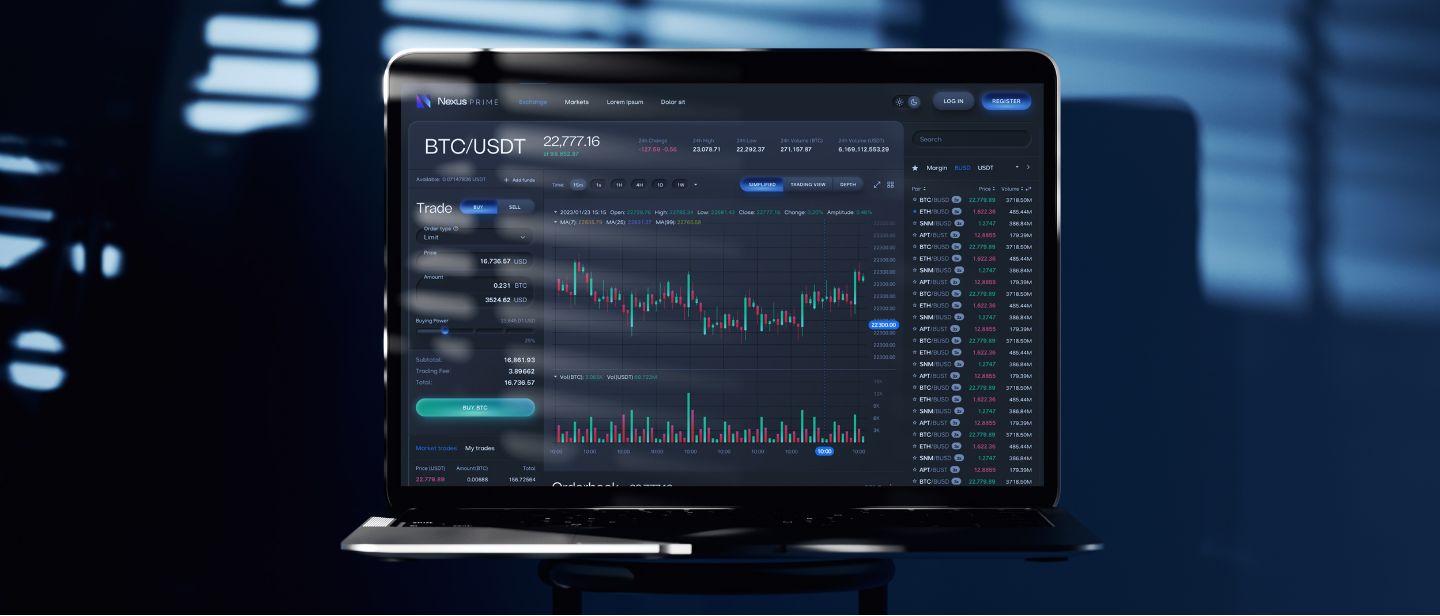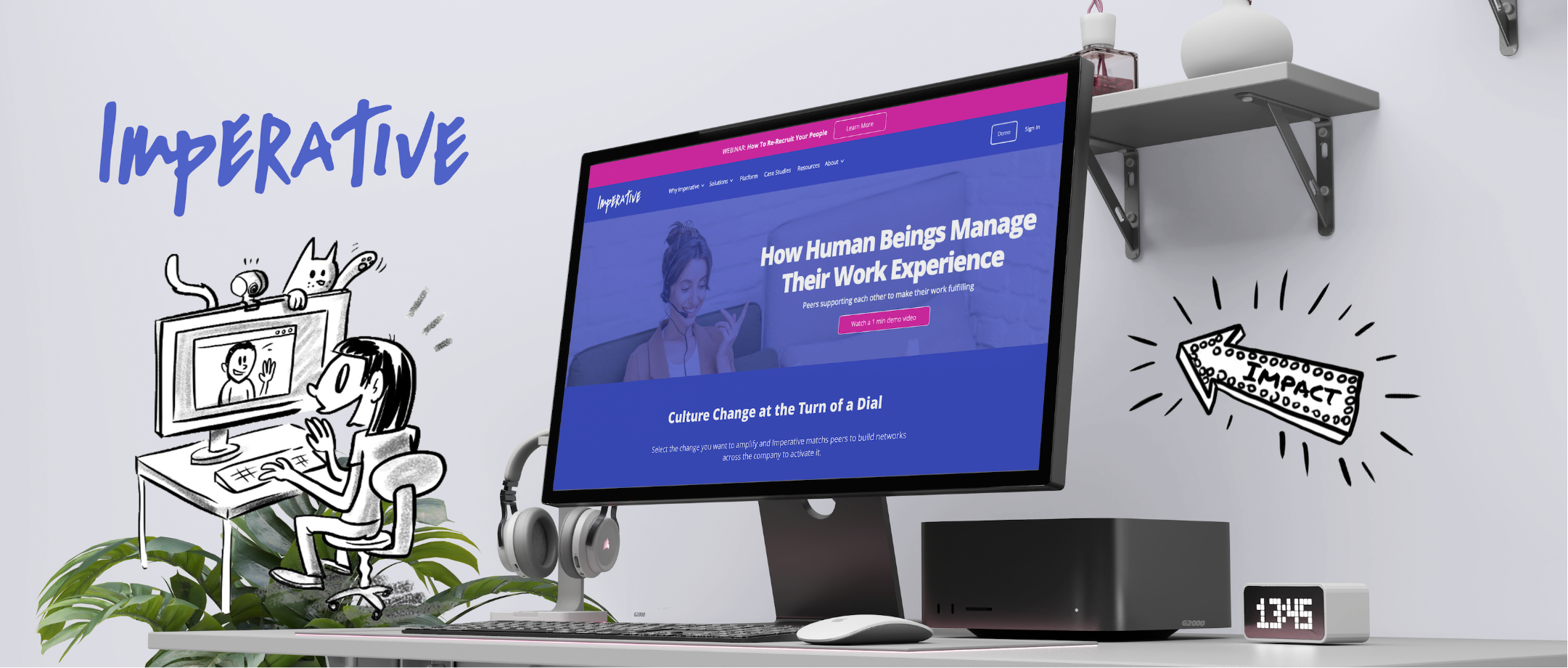Low Latency Cloud Computing Development Services
Transform milliseconds into competitive advantage with infrastructure that operates at the speed of thought. From high-frequency trading engines to real-time gaming servers, we deliver cloud computing solutions where every microsecond counts and performance failures cost real money.
Our low-latency expertise spans the complete spectrum from decentralized exchanges and order book matching to real-time streaming and game server orchestration. We don’t just optimize existing systems—we architect solutions that push the boundaries of what’s technically possible, handling everything from synchronized vector clocks to edge computing deployment strategies that minimize network hops.
When standard cloud solutions introduce unacceptable latency, we engineer custom infrastructure that operates below the threshold of human perception. Whether you’re building trading bots that compete in microsecond markets or streaming platforms that demand sub-5ms response times, we provide the technical leadership that turns latency constraints into strategic advantages.
Start Your Low-Latency Project Get Technical ConsultationThe Low-Latency Challenge – Why Most Solutions Fail
The low-latency computing landscape exposes the harsh reality that most cloud solutions weren’t designed for applications where milliseconds determine success or failure. Companies routinely underestimate the complexity of maintaining consistent low latency at scale, discovering too late that their “optimized” systems deliver inconsistent performance that destroys user experience.
Observability Blindness Creates Performance Disasters
Without proper monitoring across multiple dimensions—region, location, user type, and network conditions—seemingly minor performance decisions become catastrophic. We’ve seen systems where accepting slow performance from “just one percentile” meant every hundredth user experienced absolutely terrible performance, making the entire platform unusable for a significant portion of the user base. The problem isn’t just slow responses—it’s the complete lack of visibility into how latency varies across different user scenarios and geographic locations.
Infrastructure Limitations Beyond Traditional Cloud
When true low latency is required, standard cloud providers like AWS become insufficient. Real performance demands internet infrastructure optimization, content delivery networks, and custom protocols that operate below the traditional web stack. Most development teams think they can “just go a little bit faster” without understanding the deep technical requirements: synchronized vector clocks, relativistic time effects, and protocol-level optimizations that require specialized expertise.
Edge Computing Complexity Exponentially Increases
Modern applications spanning gaming, streaming, and real-time trading push technical boundaries that expose the limits of traditional architecture. Each additional edge node multiplies the complexity of maintaining consistent performance, requiring sophisticated path optimization algorithms and real-time network reconfiguration capabilities that most teams can’t build or maintain.
Business Impact of Latency Failures
The business impact is immediate: trading algorithms that miss opportunities due to latency, gaming experiences that frustrate users with lag, and streaming platforms that lose viewers to competitors with superior performance. Success in low-latency computing isn’t about incremental improvements—it’s about fundamental architectural decisions that either enable or prevent achieving the performance thresholds your business demands.
Our Low-Latency Cloud Computing Expertise
Our low-latency development capabilities span the complete performance spectrum, from sub-millisecond trading engines to real-time streaming infrastructure that operates under extreme performance constraints. Rather than treating low latency as an optimization afterthought, we architect solutions from the ground up to minimize latency at every layer of the technology stack.
High-Frequency Trading and Order Book Optimization
Our expertise in decentralized exchanges and order book matching systems centers on circular buffer implementations, real-time matching algorithms, and trading bot architectures that operate in microsecond timeframes. We’ve built trading engines that handle high-frequency scenarios where every network hop and memory allocation directly impacts profitability. Our trading infrastructure includes sophisticated risk management systems, dynamic pricing algorithms, and real-time reconciliation engines that maintain accuracy under extreme performance pressure.
Real-Time Streaming and Game Server Architecture
Gaming and streaming applications demand consistent sub-10ms response times across distributed user bases. Our game server implementations handle complex scenarios including race condition management, game engine integration, and real-time state synchronization across multiple concurrent sessions. We’ve developed streaming solutions that maintain consistent quality across varying network conditions, implementing adaptive bitrate strategies and edge deployment patterns that minimize buffering and maximize user engagement.
Network Infrastructure and Path Optimization
Beyond application-level optimization, we design network infrastructure that intelligently routes traffic for optimal performance. Our work with broadcast-grade streaming systems includes automatic path creation algorithms that analyze hundreds of network devices in real-time, selecting optimal signal routing through dynamic network reconfiguration. This approach enabled Champions League satellite transitions with minimal latency by creating intelligent pathfinding systems that adapt to changing network conditions.
Advanced Observability and Performance Monitoring
True low-latency systems require observability that tracks performance across multiple dimensions simultaneously. Our monitoring implementations provide real-time visibility into latency patterns by geographic region, user type, device characteristics, and network conditions. We’ve discovered critical performance issues like mobile internet usage patterns in professional settings that dramatically impact user experience, enabling targeted optimizations that would be impossible without comprehensive performance tracking.
Edge Computing and CDN Integration
Modern low-latency applications require edge computing strategies that position processing power closer to end users. Our edge implementations include intelligent load balancing, geographic traffic routing, and real-time capacity management that maintains performance under varying demand patterns. We integrate with content delivery networks and implement custom caching strategies that reduce round-trip times while maintaining data consistency across distributed systems.
Protocol-Level Performance Optimization
When standard web protocols introduce unacceptable latency, we implement custom communication protocols optimized for specific use cases. Our protocol expertise includes synchronized vector clock implementations, time-sensitive networking protocols, and low-level optimizations that bypass traditional web stack limitations. These implementations require deep understanding of network hardware, operating system internals, and specialized timing mechanisms that most development teams cannot effectively implement or maintain.
Our Proven Development Approach
Software development success isn’t just about writing code—it’s about transforming business challenges into scalable technology solutions that deliver measurable value. Our battle-tested process ensures every project minimizes risk while maximizing innovation potential through structured phases that maintain flexibility and client collaboration. The essential components of our development approach include:
Proven Methods for Maximum Business Impact
This structured approach has been refined through hundreds of successful projects, ensuring you benefit from both cutting-edge innovation and proven development methodologies that minimize risk while maximizing business impact.

Featured Case Study:
Nexus – Rapid Buildout of a Staging-Ready,
Real-Time Crypto-Fiat Exchange Platform

The Challenge
Nexus set out to bridge traditional banking and crypto, aiming to provide
clients with a compliant, auditable, and user-friendly platform for trading,
loyalty, and staking. Their goal was ambitious: make institutional-grade
infrastructure available to end users while navigating a regulated and
fast-evolving environment. Like many fintech startups entering the blockchain
space, Nexus faced the complexity of building a complete exchange from scratch
with real-time trading, support for both fiat and crypto, bank integrations,
loyalty, and staking—all in one roadmap.
The challenge was compounded
by compliance complexity, as they intended to pass audits including KNF,
AML/KYC/KYB requirements, meaning systems and integrations had to be built with
regulatory approval from the start. Additionally, they faced fragmented internal
alignment with multiple teams, moving parts, evolving requirements, and almost
no documentation. The market window demanded rapid validation—not just building,
but giving stakeholders something concrete to test and iterate on, all while
managing security and operational risks including staking, loyalty, wallet
management across hot/warm/cold storage, and all the operational risks of
handling real money.
Our Solution Approach
Understanding that Nexus needed both technical excellence and regulatory
readiness, we designed a comprehensive approach that cut through ambiguity while
delivering production-grade infrastructure in months rather than years. Our team
focused on discovery and product clarity first, running focused workshops and
writing living documentation as features took shape. We mapped integration
boundaries between banking, crypto, internal teams, and third-party services to
ensure seamless operation across the entire ecosystem.
The technical
architecture centered on real-time capabilities with enterprise-grade security,
recognizing that blockchain projects require both on-chain innovation and
off-chain operational excellence. Our approach emphasized rapid iteration with
stakeholders while building foundations that could scale to handle serious
trading volumes and regulatory scrutiny.
Technical Implementation
The technical architecture leveraged Scala, Kafka, AWS, React, and blockchain
technologies to deliver a complete trading ecosystem. We implemented a real-time
matching engine and price aggregator supporting both fiat and crypto trading
pairs, ensuring low-latency execution crucial for competitive trading
environments. The wallet system included hot, warm, and cold wallet flows with
multisig support and fund separation across systems, providing the security
layers essential for institutional confidence.
Critical to the platform’s success was seamless on/off-ramping through
integrated bank-as-a-service providers for fiat entry and exit, plus crypto
on/off ramps that handled the complex regulatory requirements around money
transmission. We designed and implemented working modules for staking and
loyalty in the same delivery window—no phased roadmap approach, just shipping
complete functionality that users could immediately test and validate.
DevOps and staging readiness received particular attention, with fully
orchestrated infrastructure enabling live end-to-end validation. We ensured
environments were robust and isolated, enabling parallel work on multiple risk
fronts while supporting the client in simulating real operational scenarios
including trading, wallet moves, staking, and loyalty with production-grade data
and flow.
Measurable Results Achieved
The impact of our partnership with Nexus demonstrates the value of combining blockchain expertise with production engineering discipline:
- Rapid staging delivery in just a few months – Nexus had a full-featured, fully integrated staging environment covering the entire business flow from user onboarding and KYC, through trading, staking, and loyalty, to fiat/crypto ramps.
- End-to-end testability achieved immediately – Internal and external teams could validate business logic, integration, and system behavior, exposing issues before investing in costly compliance or production infrastructure.
- High velocity execution – The project achieved in months what often drags out for years, with core features up and running rather than just planned.
- Prepared for regulatory next steps – While full compliance and auditability were not yet reached, the platform architecture, flows, and operational processes were designed to support these requirements as the business matured.
”The Nexus engagement demonstrates how blockchain projects succeed when technical excellence meets regulatory awareness and business pragmatism, delivering real infrastructure rather than speculative technology.”
Key Lessons and Applications
This project reinforced several critical principles that benefit all blockchain clients: regulatory requirements must drive architecture from day one, not be retrofitted later; hybrid on-chain/off-chain systems deliver better user experiences than pure blockchain approaches; and staging environments with real data flows are essential for validating complex financial systems before production launch. These insights continue informing our approach to fintech and blockchain challenges across different regulatory environments and business models.
Zero to Hero – Low-Latency Development Spectrum
Low-latency cloud computing success depends on matching technical sophistication to performance requirements and business constraints. Our development spectrum approach ensures you invest appropriately for current needs while establishing foundations that can scale to meet increasingly demanding performance requirements.


PoC Tier: Latency Assessment and Optimization Planning
Comprehensive performance analysis and latency optimization validation through focused prototyping that tests critical performance bottlenecks, identifies infrastructure constraints, and validates technical feasibility under realistic load conditions. This stage includes network topology analysis, protocol selection validation, and baseline performance measurement against target latency requirements. Deliverables include working performance prototype, detailed latency analysis report, and optimization roadmap with realistic performance targets and implementation timelines.
MVP Tier: Basic Low-Latency Architecture with Edge Deployment
Production-ready low-latency systems with core optimization functionality that performs reliably under expected load conditions, successful edge deployment across multiple geographic regions, and essential monitoring capabilities working consistently across different network scenarios with measurable performance improvements over standard cloud deployments. MVP stage emphasizes performance validation, infrastructure reliability, and scalable architecture that supports future optimization without requiring fundamental system rebuilds.
Production Tier: Sub-10ms Latency Systems with Advanced Optimization
Professional-grade low-latency platforms featuring consistent sub-10ms response times across distributed infrastructure, comprehensive observability and performance monitoring across multiple dimensions, extensive optimization across network topology and processing pipelines, scalable architecture supporting enterprise-scale load requirements, and production-ready integration with existing business systems including robust error handling and automatic performance recovery.
State-of-the-Art Tier: Sub-Millisecond Systems with Quantum-Ready Architecture
Advanced implementations pushing the boundaries of technical possibility through sub-millisecond response times across complex distributed systems, edge AI processing that makes intelligent routing decisions in real-time, quantum-ready architectural patterns that anticipate future computing paradigms, real-time data streaming with predictive optimization, and cutting-edge protocol implementations that bypass traditional network stack limitations while maintaining security and reliability standards.
This progression ensures your low-latency investment scales appropriately with business growth while maintaining technical excellence and competitive performance advantages at every stage of development.
Flexible Engagement That Fits Your
Business Reality
Every business has unique constraints, timelines, and budget realities. That’s why we’ve developed engagement models that prioritize flexibility while maintaining transparency and predictability. Our approach recognizes that the best pricing model depends on your project’s characteristics, risk tolerance, and organizational preferences.
- Time & Materials – Maximum flexibility for evolving requirements
- Fixed-Price Delivery – Budget predictability for well-defined scope
- Hybrid Approach – Combining both models to balance flexibility with cost certainty
- Discovery Workshop – Risk-free starting point for all engagement types
Best for complex, evolving projects requiring flexibility
Time & Materials:
Maximum Flexibility for Evolving Requirements
For projects where requirements may evolve, scope needs adjustment, or you want maximum control over development direction, our time and materials model provides the flexibility you need. You pay for actual work performed, with detailed time tracking and regular reporting. This approach works exceptionally well for long-term partnerships, complex integrations, or innovative projects where discovery happens alongside development. We provide detailed estimates upfront and regular budget updates, so you’re never surprised by costs.
Ideal for well-defined scope with predictable requirements
Fixed-Price Delivery:
Budget Predictability for Defined Scope
When scope is well-defined and you need budget certainty, our fixed-price engagements deliver exactly what you need within agreed timelines and costs. This model works best for clearly defined projects like MVP development, system migrations, or feature additions to existing platforms. We include comprehensive requirements analysis in our fixed-price quotes, ensuring deliverables are crystal clear before work begins.
Combines budget certainty with adaptive capability
Hybrid Approach:
Best of Both Worlds
Many successful projects combine both models—fixed-price for well-defined phases like initial MVP development, transitioning to time and materials for ongoing feature development and optimization. This gives you budget predictability for core functionality while maintaining flexibility for innovation and iteration based on user feedback.
1–2 week assessment providing detailed roadmap
Discovery Workshop:
Your Risk-Free Starting Point
Every engagement begins with our discovery workshop process, typically lasting 1-2 weeks, where we validate requirements, assess technical feasibility, and provide detailed project estimates. This gives you the information needed to make informed decisions about project approach, timeline, and budget allocation.
What’s Always Included?
Regardless of engagement model, every project includes comprehensive documentation, post-launch support period, knowledge transfer sessions, and our commitment to long-term partnership. We don’t believe in hidden costs or surprise fees—everything is transparent from the first conversation.
For a deeper understanding of how to choose the right pricing model for your specific situation, explore our comprehensive analysis of Time and Materials vs Fixed Fee pricing models, where we break down the advantages and considerations of each approach.

Client Success Story:
Imperative Group
The strongest validation of our approach comes from long-term partnerships where we’ve become integral to our clients’ success. Rather than collecting testimonials from multiple projects, we prefer to showcase the depth and impact of sustained collaboration through detailed case studies that demonstrate measurable business outcomes.
Our Partnership Impact:
- Complete technology leadership for their peer coaching platform serving enterprise clients
- 9+ years of continuous collaboration from startup phase to market leadership
- $7+ million in revenue generation through scalable platform architecture
- Enterprise-grade security implementation including SOC 2 compliance
- Seamless team integration with daily communication and collaborative development
”One of the keys to our success was finding Jacek and Iterators. They’re great communicators. We’ve been in touch almost on a daily basis, collaborating on both a large and small scale. I’ve always had an authentic sense that they’re in it for our success first.”
Key Lessons and Applications
This partnership exemplifies our approach to client relationships—we don’t just deliver projects, we become trusted technology partners invested in long-term success. When clients like Imperative achieve significant business milestones, their success becomes our success, reflecting the depth of partnership that defines our client relationships.
The platform exceeded both customer and QA team expectations, delivering 10% above requirements.
App stability has drastically improved, with positive feedback on design quality and fast response times across iOS and Android
Pre-Assembled Teams Ready for Immediate Impact
The difference between project success and failure often comes down to team expertise and chemistry. We’ve spent years building cohesive, experienced teams that can integrate seamlessly with your organization and deliver results from day one. No lengthy recruitment processes, no team-building delays—just expert professionals ready to amplify your vision.
Senior-Level Expertise Across the Technology Stack
Our teams consist of senior developers with 5+ years of hands-on experience in their respective technologies. These aren’t junior developers learning on your project—they’re seasoned professionals who’ve solved complex problems, architected scalable systems, and delivered business-critical applications. Each team includes project managers experienced in agile methodologies, quality assurance specialists who understand both automated and manual testing strategies, and low-latency computing specialists who bring deep performance optimization expertise to your project.

Community Leadership and Continuous Innovation
Technical excellence requires staying ahead of industry trends and contributing back to the development community. Our team members are active in open source contributions, regularly publish technical insights on our blog, speak at industry conferences, and participate in technology workshops. This isn’t just professional development—it’s how we ensure your project benefits from cutting-edge approaches and battle-tested solutions. We’re not just service providers; we’re technology partners who bring industry leadership to your specific challenges.

Proven Remote Collaboration and Team Integration
Years of successful remote partnerships have taught us how to integrate seamlessly with your existing teams and processes. We excel at cultural fit assessment, establishing clear communication protocols, and maintaining productivity across different time zones and working styles. Our approach to team integration focuses on complementing your existing capabilities rather than replacing them, ensuring knowledge transfer and long-term sustainability.

Long-Term Partnership Philosophy
We measure success not just by project delivery, but by the ongoing relationships we build. Many of our client partnerships span over a decade, evolving from single projects to comprehensive technology partnerships. This long-term perspective influences how we approach every engagement—we’re not just solving today’s problems, but building foundations for tomorrow’s opportunities. When you work with us, you’re gaining a technology partner committed to your long-term success, not just completing a project checklist.

Our Technology Expertise
Technology choices define the foundation of your software’s performance, scalability, and long-term maintainability. We select technologies based on proven production performance, long-term viability, and alignment with your specific business requirements rather than following trends or personal preferences.
Backend Technologies for Scale and Performance
Our backend development leverages powerful, battle-tested technologies designed for high-performance applications. Scala and the Akka toolkit provide the foundation for building distributed, high-concurrency systems that handle enterprise-scale loads efficiently. Node.js enables rapid development of API services and real-time applications, while Python powers our data science, machine learning, and automation capabilities. We also work with Java and Spring Boot for enterprise integrations and existing system compatibility. For low-latency projects, our backend expertise ensures optimal message processing and real-time coordination capabilities.

Frontend and Mobile Development Excellence
Modern user experiences demand responsive, intuitive interfaces across all devices. React.js forms the backbone of our web application development, enabling complex, interactive user interfaces with excellent performance characteristics. For mobile applications, React Native allows us to deliver native-quality experiences across iOS and Android platforms with efficient development cycles. We complement these with TypeScript for larger applications requiring enhanced code reliability, Vue.js for projects requiring different architectural approaches, and native iOS/Android development when platform-specific capabilities are essential.

Infrastructure and DevOps for Reliability
Robust infrastructure and deployment practices ensure your software performs reliably in production environments. Amazon Web Services (AWS) and Microsoft Azure provide the cloud infrastructure foundation, with containerization using Docker and orchestration through Kubernetes for scalable, manageable deployments. Terraform enables infrastructure-as-code practices, ensuring consistent, reproducible environments across development, staging, and production. Our CI/CD pipelines automate testing and deployment, reducing manual errors and enabling rapid, confident releases. Low-latency deployment includes edge computing optimization and real-time performance monitoring.

Data Management and Analytics
Effective data management powers business insights and application performance. PostgreSQL serves as our primary relational database for applications requiring ACID compliance and complex queries, while MongoDB handles document-based data and rapid prototyping scenarios. Elasticsearch powers search functionality and log analysis, enabling powerful user experiences and operational insights. For analytics and business intelligence, we integrate with tools like DataDog for application performance monitoring and various BI platforms for business reporting and dashboard creation.

Why These Technology Choices Matter
Our technology selections prioritize proven scalability and performance in production environments, long-term maintainability and community support, industry-standard security practices and compliance capabilities, and cost-effective hosting and operational efficiency. We don’t chase technology trends—we choose tools that will serve your business well for years to come, with clear upgrade paths and strong ecosystem support.

Staying Current While Maintaining Stability
Technology evolution never stops, and neither does our learning. We continuously evaluate new technologies and approaches, contributing to open source projects and staying engaged with technology communities. However, we implement new technologies in production only after thorough evaluation and testing, ensuring you benefit from innovation without bearing unnecessary risk.

Frequently Asked Questions
Project timelines depend on scope, complexity, and your specific performance requirements, but we can provide general guidance based on our experience with similar projects. Basic low-latency optimization typically takes 2–4 months for most applications, while comprehensive sub-millisecond systems usually require 6–12 months depending on infrastructure complexity and integration requirements. During our discovery workshop, we provide detailed timeline estimates based on your specific performance targets and technical constraints. We always prefer realistic timelines that ensure quality delivery over rushed schedules that compromise performance results.
Our comprehensive approach includes everything needed for successful high-performance system delivery. This includes latency analysis and performance benchmarking, architecture design optimized for your specific use case, comprehensive testing across various network conditions and load scenarios, infrastructure deployment with edge computing optimization, detailed performance documentation and monitoring setup, post-launch performance tuning and optimization, and knowledge transfer to your team. We don’t believe in surprise costs or incomplete deliverables—when we commit to a project scope, we deliver everything needed for your success. Our goal is to provide solutions that work reliably under production loads, not just pass acceptance testing.
Performance consistency is built into our development process from day one, not added as an afterthought. Every system includes comprehensive monitoring across multiple dimensions—geographic region, user type, network conditions, and device characteristics. We implement edge computing strategies that position processing closer to end users, utilize content delivery networks for optimal content routing, and establish real-time observability that tracks performance variations across all deployment scenarios. For enterprise clients, we can implement additional monitoring measures including predictive performance analysis, automated scaling based on regional demand, and comprehensive performance reporting that identifies optimization opportunities before they impact user experience.
Launch is just the beginning of our partnership, not the end. We provide comprehensive performance monitoring to ensure optimal latency across all user scenarios, gather performance data to identify improvement opportunities, implement continuous optimization based on real-world usage patterns, and offer ongoing infrastructure scaling and enhancement. Our support includes both reactive performance issue resolution and proactive system optimization that identifies potential bottlenecks before they impact user experience. Many clients continue working with us for ongoing performance tuning, infrastructure scaling, and additional optimization as their user base grows and performance requirements evolve.
Absolutely, and we excel at team integration and collaboration. We can work as an extension of your existing team, providing additional capacity and specialized low-latency expertise, take ownership of specific performance-critical components while maintaining seamless integration with your team’s work, provide mentorship and knowledge transfer to help your team develop new performance optimization capabilities, or lead technical aspects while working closely with your business stakeholders and product managers. Our approach is collaborative rather than competitive—we’re here to amplify your team’s capabilities, not replace them. We adapt our working style to match your existing processes and communication preferences.
Performance requirements evolution is natural in low-latency system development, and our process is designed to accommodate change while maintaining project momentum. We use agile methodologies that build flexibility into the development process, conduct regular performance review sessions where you can provide feedback and adjust targets, maintain detailed performance tracking to ensure transparency about optimization impact, and offer both time-and-materials and fixed-price options depending on your preference for handling scope changes. Our goal is to deliver systems that meet your actual performance needs, which sometimes means adapting our approach as you learn more about your requirements through testing real-world performance scenarios.
Ready to Transform Your Performance Requirements?
Starting a conversation about your technology needs doesn’t require lengthy procurement processes or formal commitments. We believe the best partnerships begin with understanding, and understanding starts with conversation.
Our discovery conversations help you clarify requirements, explore technical approaches, and understand what’s possible within your timeline and budget constraints. These aren’t sales calls—they’re collaborative planning sessions where we share insights from similar projects and help you make informed decisions about your technology strategy. Whether you’re exploring options, validating an approach, or ready to move forward with development, we’ll provide honest guidance tailored to your specific situation.
During our consultation, we’ll explore your current challenges and objectives, discuss technical approaches and potential solutions, provide insights from similar projects and industry experience, outline realistic timelines and engagement options, and answer your questions about our process, team, and approach. You’ll leave the conversation with clearer understanding of your options and next steps, regardless of whether we end up working together.
We respond to all inquiries within the same business day, with most initial consultations scheduled within 48 hours of first contact. Our team includes low-latency computing specialists who understand both the technical and business aspects of your challenges.
Schedule directly through our online calendar for immediate confirmation, call us for same-day consultation availability, or email with specific questions and we’ll respond with detailed insights. We accommodate your preferred communication style and schedule, including early morning or evening calls for urgent projects or international coordination.
Our approach to new relationships focuses on providing value in every interaction, whether that leads to a project or not. We’ve built our reputation on honest assessments and realistic recommendations, not high-pressure sales tactics. Many of our best client relationships began with informal conversations that evolved into partnerships over time.
The most common feedback we receive about our initial consultation process is appreciation for our direct, knowledgeable approach and our willingness to share insights freely, even before any formal engagement begins. We believe great partnerships start with transparency, expertise, and mutual respect—values that guide every interaction from first contact through long-term collaboration.

Jacek Głodek
Founder & Managing Partner
of Iterators




